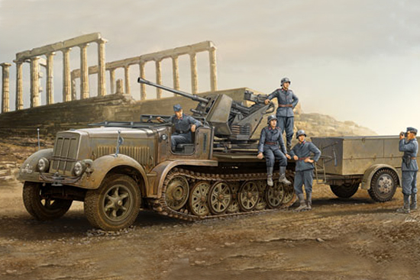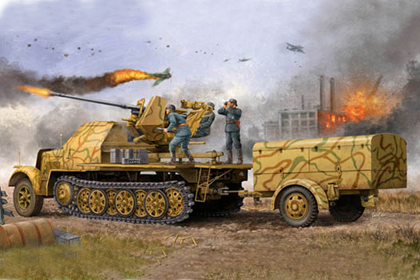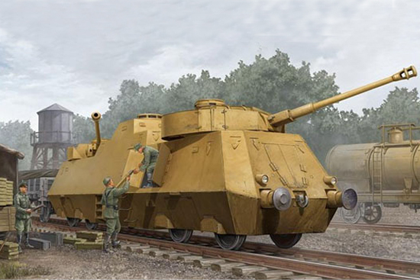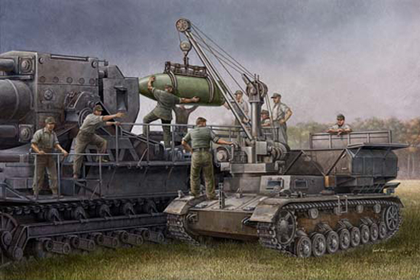![]()
This is the Eduard, photo etch sets for the ‘German 3.7cm FlaK 37 auf Selbstfahrlafette‘ from Trumpeter.
Detail set |
Trumpeter |
||||
| (36 104) | Basic | ||||
Source: Eduard
![]()
This is the Eduard, photo etch sets for the ‘German 3.7cm FlaK 37 auf Selbstfahrlafette‘ from Trumpeter.
Detail set |
Trumpeter |
||||
| (36 104) | Basic | ||||
Source: Eduard
This is the Trumpeter 01525 kit in 1/35 scale, of the ‘German 3.7cm FlaK 37 auf Selbstfahrlafette – Early version’.

Starting in 1943, an armor radiator shield and crew cab were introduced as protection against shell fragments and small-arms fire.
Production of the Sd.Kfz.7/2 began in 1942, and continued to the end of the war, with about 1000 produced by the end of January 1945. Initially, there were nine Sd.Kfz.7/2 in each FlaK-Kompanie or Batterie; increased to 12 in October 1943.
This is the Trumpeter 01526 kit in 1/35 scale, of the ‘German 3.7cm FlaK 37 auf Selbstfahrlafette – Late version’.

Starting in 1943, an armor radiator shield and crew cab were introduced as protection against shell fragments and small-arms fire.
Production of the Sd.Kfz.7/2 began in 1942, and continued to the end of the war, with about 1000 produced by the end of January 1945. Initially, there were nine Sd.Kfz.7/2 in each FlaK-Kompanie or Batterie; increased to 12 in October 1943.
This is the Trumpeter 01516 kit in 1/35 scale, of the ‘German Panzerjäger-Triebwagen 51’.

There were only three of this railcar made (No. 51-53) and all were found at the factory by Allied forces, but it is questionable whether any ever went into service.
This is the Trumpeter 01511 kit in 1/35 scale, of the ‘German Kanonen und Flakwagen’.

The two halves of the train, before and behind the locomotive were identical and consisted of one artillery car with one 10cm le.F.H 14/19(p) gun, one command and infantry car and one artillery and anti-aircraft car with one 7.62cm F.K.295/l(r) and one 2cm anti-aircraft quadruple unit.
This is the Lifecolor TSC-02 effect set, with effect colors for ‘Tensocrom’.

This is the Trumpeter 00363 kit in 1/35 scale, of the ‘German Pz.Kpfw.IV Ausf. F Fahrgestell’.

There were two Munitionsschlepper for each of the six Gerät 040 Nr. I to VI and one for the experimental Gerät Nr. VII.
This is the Trumpeter 00219 kit in 1/35 scale, of the ‘German Panzerlok BR57 Armoured Locomotive’.

The Deutsche Reichsbahn-Gesellschaft (DRG), or German National Railway between 1920 and 1945, saw armored trains as a way to preserve and advance a military presence. By keeping a strong military face on this state owned railroad.
The BR57 armored trains locomotive was actually based on the Prussian series G10 locomotive first built in 1910 and featuring an 0-10-0 wheel arrangement.